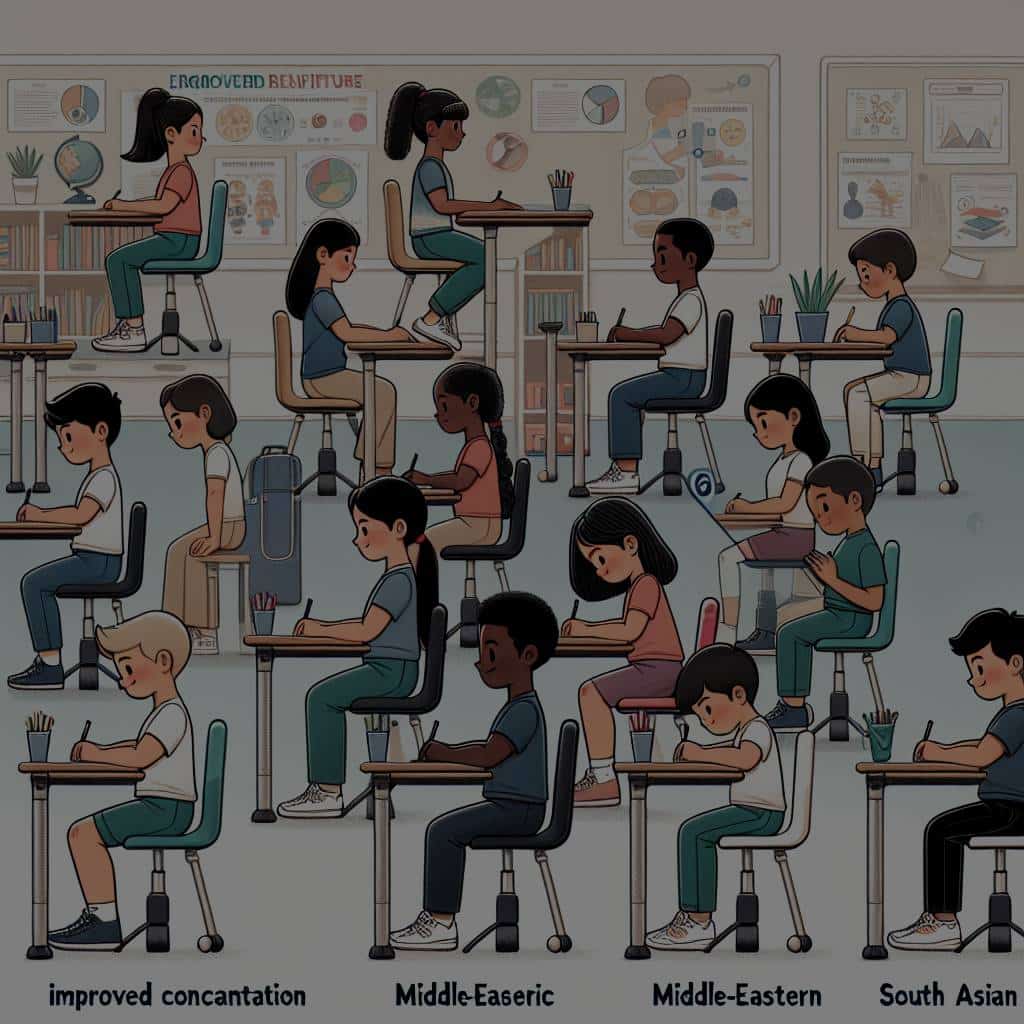Ergonomic furniture has long been lauded as a boon to health and productivity in the office environment. But does it have the same beneficial impact on students in a learning environment? Let’s delve into how ergonomic desks, chairs, and other furniture pieces may play an essential role in enhancing student performance and physical health in classrooms.
The Impact of Furniture on Student’s Learning
In the school environment, students spend a significant portion of their day seating at desks. The design of these desks and chairs can greatly influence a student’s posture, comfort, and focus, thus impacting their learning experience.
Topic to read : How Can Urban Agriculture Support Food Allergy Awareness and Safe Food Practices?
Ergonomic furniture is designed to support the human body’s natural movements and posture, promoting a healthy physical state that can also boost mental focus. When students are comfortable, they are less likely to be distracted by discomfort and more likely to focus on their studies.
Ergonomic chairs and desks can also be adjusted to a student’s height, ensuring that they are not straining their necks, backs, or eyes while studying. This is especially crucial as students grow and develop, preventing potential physical problems that could arise from poorly designed furniture.
Topic to read : Can Community-Based Peer Support Programs Alleviate Postpartum Depression?
The Role of Ergonomics in Student Health and Posture
Ergonomic furniture’s central concern is promoting proper posture and reducing the risk of musculoskeletal disorders. Standard classroom furniture is often not designed with these principles in mind, leading to students adopting unhealthy postures that can lead to long-term health issues.
An ergonomic chair can provide adequate back support, promoting a healthy posture that reduces strain on the spine. Ergonomically designed desks also play a crucial role in maintaining good posture. They are adjustable to ensure that students can lay their feet flat on the floor and keep their arms at a comfortable angle while writing or typing.
Furthermore, when seating arrangements are comfortable, students are less likely to fidget and more likely to maintain a proper seated position. Constant fidgeting is not just a distraction to the student and others around them, but it is also a sign of discomfort that can have long-term health implications.
How Ergonomic Furniture Enhances the Classroom Environment
The classroom environment plays a crucial role in facilitating effective learning. This environment is not just about the physical space, but also the furniture and resources available to students. Ergonomic furniture can improve the classroom environment, making it more conducive to focused, comfortable learning.
The use of ergonomic desks and chairs can reduce clutter in the classroom, as these items are typically designed to make efficient use of space. They come with features like storage compartments for books and stationery, promoting a tidy learning environment that can enhance student focus.
Moreover, furniture items that can be adjusted according to a student’s height and size can also promote inclusivity. Every student, regardless of their physical attributes, can have a desk and chair that fits them well and makes them feel comfortable and valued.
The Long-term Benefits of Ergonomic Furniture in Schools
Integrating ergonomic furniture in schools is not just about immediate comfort and focus; it also has long-term benefits that affect students’ health and learning outcomes. Ergonomics can influence the way a student interacts with their learning environment, encouraging healthy habits that can serve them well into adulthood.
Research has shown the link between physical comfort and cognitive performance. When students are physically comfortable, they are more likely to perform better academically. On the contrary, discomfort can act as a distraction that hampers a student’s ability to concentrate and retain information.
Investing in ergonomic furniture is also an investment in students’ physical health. It encourages proper posture, reducing the risk of developing musculoskeletal disorders. These physical health benefits can also have a positive impact on students’ mental health, reducing stress and promoting overall wellbeing.
Making the Case for Ergonomic Furniture in Schools
The use of ergonomic furniture in schools is more than a trend or a luxury; it is an essential factor in creating an effective, comfortable, and inclusive learning environment. Despite the initial cost, the long-term benefits of ergonomics in schools far outweigh the investment.
As students are in their formative years, it is crucial to promote healthy habits early on, including maintaining proper posture. Ergonomic furniture can support these habits, ensuring that students are comfortable and focused while they learn.
In conclusion, the question isn’t whether we should introduce ergonomic furniture in schools, but how soon we can make it a standard part of the learning environment. With increasing evidence linking ergonomics to improved student focus and health, it’s time to rethink how we design and furnish our classrooms.
How Ergonomics Improves Student Engagement and Academic Performance
Student engagement is a vital aspect of the learning experience. Ergonomic school furniture such as desks and chairs can have a significant impact on student engagement and, consequently, the academic performance. A comfortable seating environment reduces distractions, making it easier for students to concentrate, engage with their work, and absorb information more effectively.
The adjustability of ergonomics chairs and desks allows the furniture to ‘grow’ with the student. As a result, students of varying heights and sizes can modify the seat height and desk height to their comfort. This flexibility in furniture design ensures that each student is catered for, regardless of their body size or growth rate.
Moreover, a study in South Africa demonstrated a positive correlation between ergonomic furniture use in classrooms and improved academic performance. The research highlighted that students who used ergonomic furniture had better concentration levels and were able to retain information more efficiently, leading to improved learning outcomes.
In essence, ergonomic furniture design promotes a more engaging, inclusive, and productive learning environment, which can significantly improve students’ academic performance.
The Future of Classroom Furniture: A Move Towards Ergonomics
Given the numerous benefits ergonomic furniture has on student health, focus, and academic performance, it is clear that the future of classroom furniture should be rooted in ergonomic design principles. To create effective learning environments, educational institutions need to prioritize the integration of ergonomic furniture into their classrooms.
Despite the initial costs of investment, the long-term advantages of ergonomic furniture in schools are undeniable. Along with improving students’ focus and engagement, ergonomic furniture also promotes long-term health by encouraging proper posture and reducing the risk of musculoskeletal problems.
Moreover, ergonomic furniture can be adapted to suit a wide range of learning environments, from traditional classrooms to modern, flexible learning spaces. The versatility of ergonomic furniture design ensures that it can be effective in various settings, enhancing the learning experience for all students.
In conclusion, the case for ergonomic furniture in schools is compelling. The benefits extend beyond immediate comfort and focus, offering long-term improvements in student health, academic performance, and overall learning outcomes. The question is no longer if we should integrate ergonomics into our classrooms, but rather when and how we will take this necessary step towards creating more effective, comfortable, and healthy learning environments.






